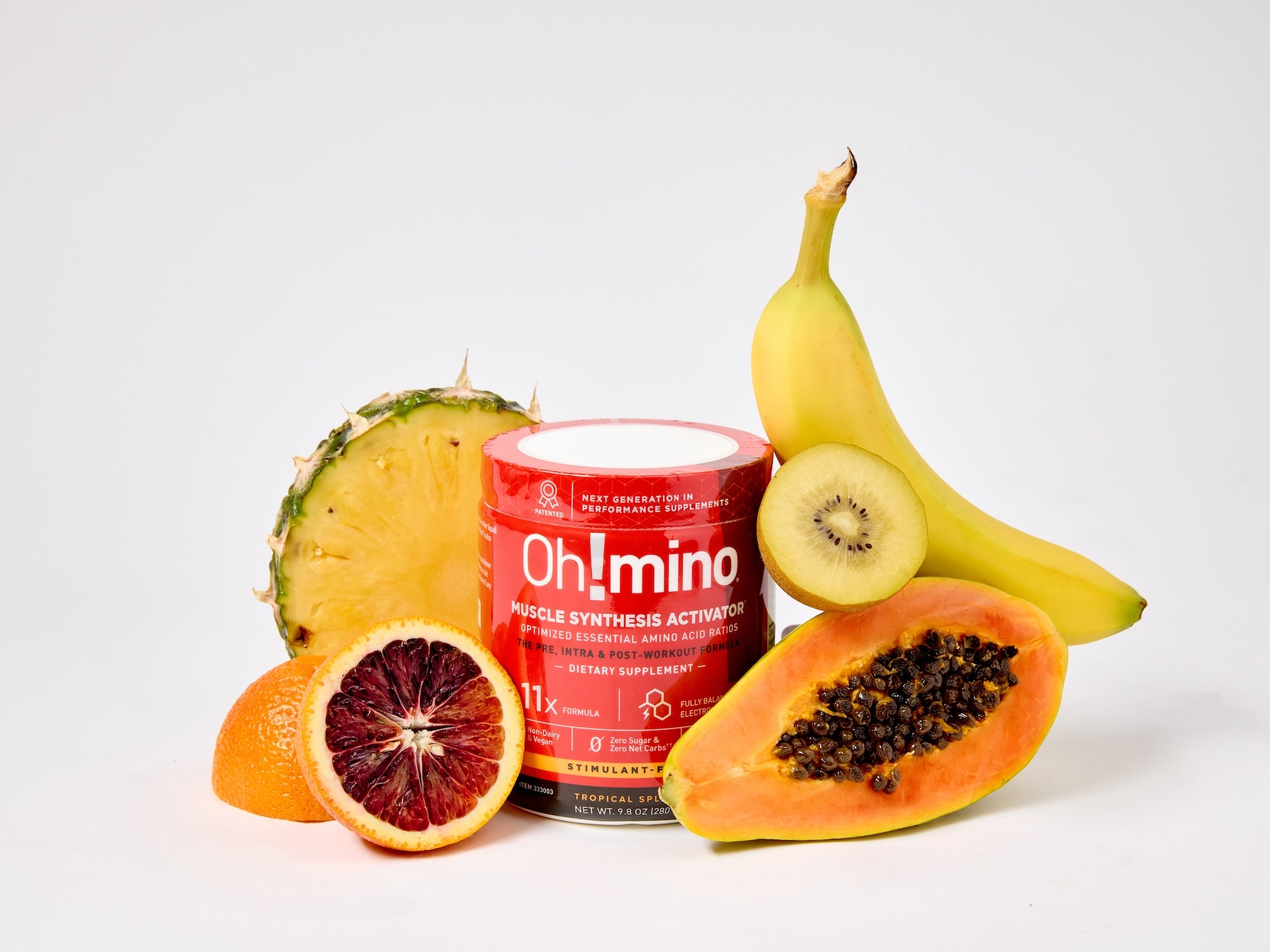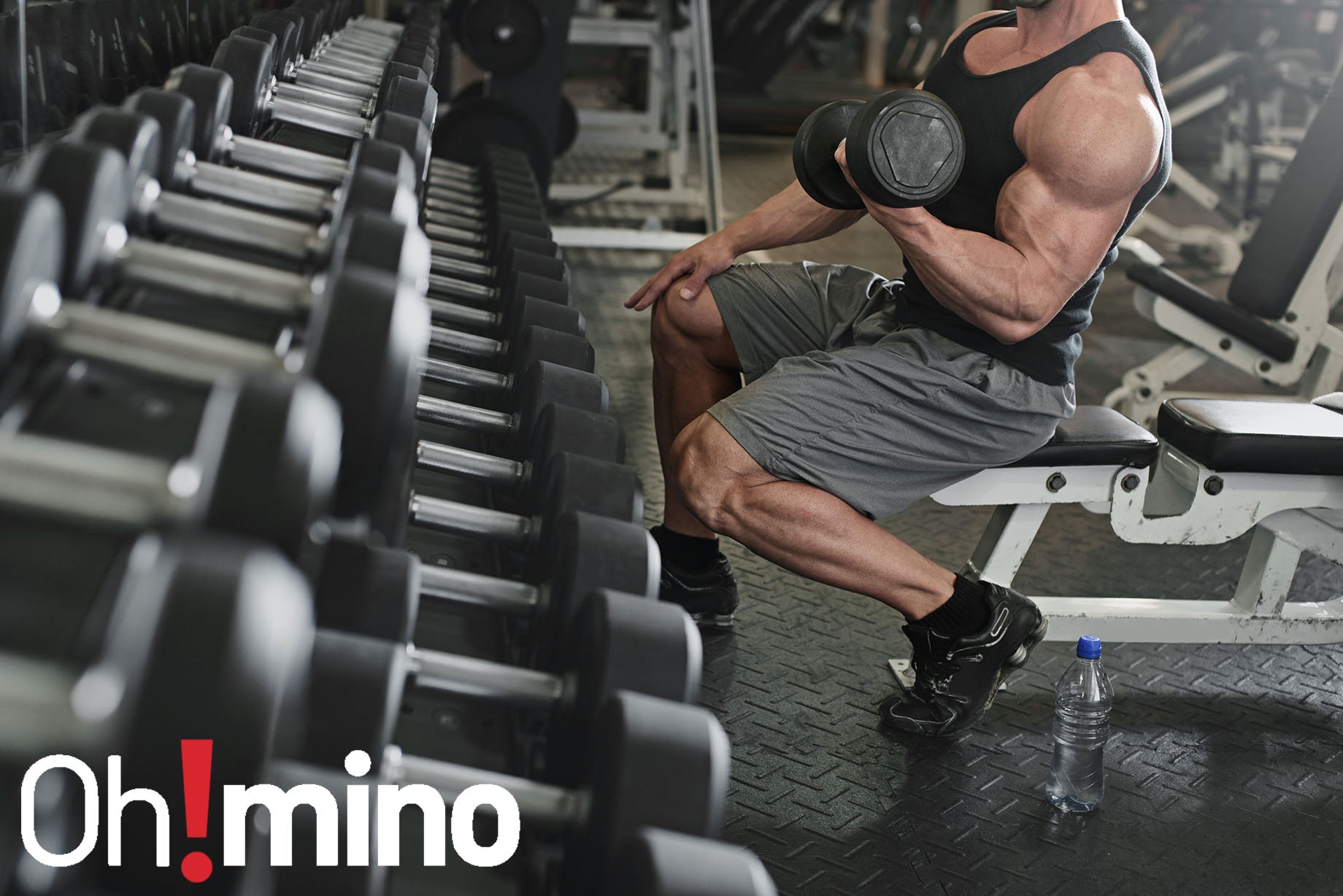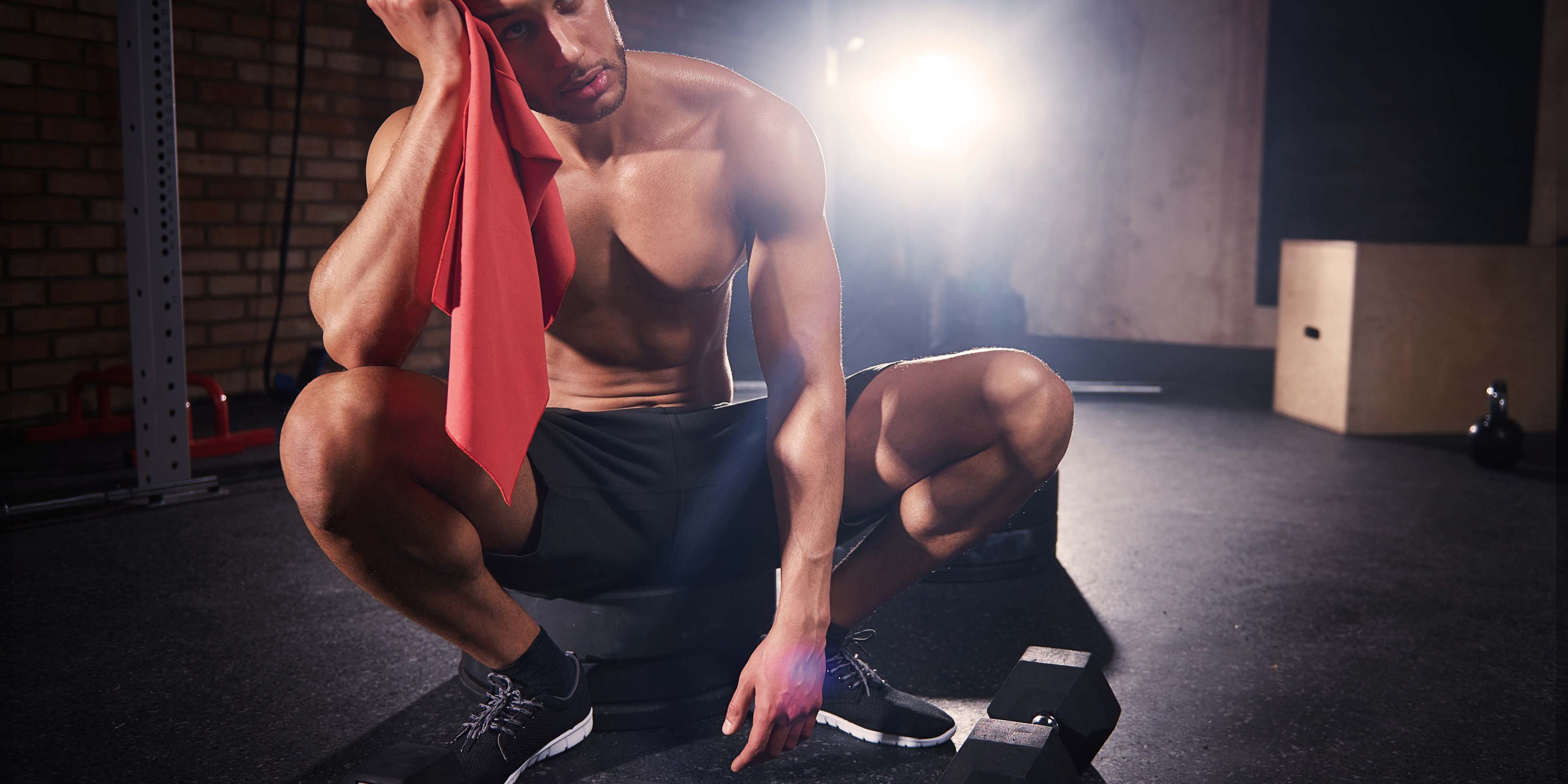Key Takeaways
-
Compound exercises provide the foundation for functional strength. The Big 5 movements (squat, deadlift, bench/push-up, overhead press, pull-ups) work multiple muscle groups simultaneously and translate directly to real-world strength applications.
-
Progressive overload drives continuous improvement. Consistently challenging your muscles through increased weight, reps, or exercise difficulty ensures ongoing strength development, whether training at home or in a commercial gym.
-
Extended rest periods (3–5 minutes) maximize strength performance, leading to superior strength adaptations compared to rushed training sessions.
-
Oh!mino® Muscle Synthesis Activator delivers all nine essential amino acids that support muscle protein synthesis, helping you recover faster between intense strength training sessions and maintain peak performance throughout your home workouts.
Transform Your Living Space Into a Strength-Building Powerhouse
Have you heard about Mark Rippetoe? He's probably the most famous strength coach in the world, the real O.G. of strength training, and his book "Starting Strength" is considered a classic. Some of those insights can be specifically adapted for home training.
Strength training is quite unique, and a lot of people don't know how to train for strength specifically. This isn't bad in itself, but if your goal is to get as strong as possible, you need to follow the principles of strength training, regardless if you’re working out in a commercial gym or your living room.
The beauty of strength training at home is that you can focus on the fundamentals without distractions, expensive memberships, or waiting for equipment. With the right approach, your home can become the perfect environment for building functional strength that translates to real-world power and athleticism.
|
Oh!mino©: Elevate Your Performance. Accelerate Your Recovery. Science-Backed Superiority for Every Fitness Journey Power Your Goals with Proven Results:
The Oh!mino® Advantage: ✓ Patented formula that’s 11x more effective than protein, 20x more effective than BCAAs Choose Your Perfect Formula: Available in refreshing Tropical Slash or Berry Blast flavors, with stimulant-free or caffeinated options. Prefer capsules? We've got you covered with the same powerful formula. Take before, during, or after training—one solution for your entire workout. |
The Foundation: Understanding Strength Training Principles
The first thing Mark Rippetoe suggests is the rep range for strength training. To get stronger, you should mostly train in the 1–5 rep range.
This low rep range is crucial because strength is primarily a neurological adaptation. When you lift heavy weights for low repetitions, you're training your nervous system to recruit more muscle fibers simultaneously and coordinate them more efficiently. This neuromuscular adaptation is what creates the incredible strength gains that powerlifters and strongmen are known for.
It's not a bad idea to do some sets in the bodybuilding rep range for accessory exercises (which is 6–15), but most of the time you should stay between 1 and 5 repetitions if strength is the goal. The reason is simple: strength is specific. If you want to get stronger at lifting heavy weights, you need to practice lifting heavy weights.
Five Best Home Strength Exercises
Bench Press (or Push-Up Variations)

Bench presses can be done at home with fairly minimal equipment.
The bench press is the gold standard for upper body pushing strength, but at home, you can achieve similar benefits with advanced push-up variations. Standard push-ups build the foundation, but to develop serious strength, you'll need to progress to more challenging variations.
Decline push-ups (feet up) increase the load on your upper chest and shoulders, while single-arm push-ups provide unilateral strength development. Archer push-ups and pseudo-planche push-ups add even more intensity. For those with a home gym setup, a basic bench and barbell set or heavy dumbbells can provide the traditional bench press stimulus.
The main thing is progressive overload, whether that's adding weight, increasing difficulty, or manipulating tempo. Your chest, shoulders, and triceps will respond to consistent challenging stimuli regardless of if you're using a barbell or your bodyweight.
Squat (Bodyweight to Weighted Variations)

The squat is often called the king of exercises because it works your entire lower body while challenging your core stability.
At home, you can start with bodyweight squats and progress through numerous variations to build tremendous leg strength. Jump squats add explosive power development, while single-leg pistol squats provide unilateral strength and mobility challenges.
Goblet squats with a heavy dumbbell or kettlebell bridge the gap between bodyweight and barbell training. For advanced home gym setups, back squats remain the ultimate lower body strength builder.
Deadlift (Barbell, Dumbbell, or Single-Leg Variations)

Single-leg Romanian deadlifts work all sorts of muscles, like your glutes, spine, at lats.
The deadlift teaches you to generate tremendous force from the ground up, working your entire posterior chain: glutes, hamstrings, erector spinae, lats, traps, and grip strength. At home, conventional deadlifts with a barbell provide maximum loading potential, but alternatives exist for every situation.
Heavy dumbbell deadlifts can provide significant strength stimulus, while single-leg Romanian deadlifts challenge stability and unilateral strength. Suitcase deadlifts with heavy dumbbells or kettlebells add anti-lateral flexion core training to the movement pattern.
Overhead Press (Barbell, Dumbbell, or Pike Push-Up)

The overhead press builds incredible shoulder strength and stability while challenging your entire core.
This exercise has a direct carryover to any activity requiring you to press objects overhead or maintain strong shoulder positioning.
Pike push-ups provide a bodyweight alternative that can be progressed to handstand push-ups for advanced practitioners. Dumbbell shoulder presses allow for unilateral training and accommodate different mobility limitations. The traditional barbell overhead press remains the best exercise for developing raw pressing power.
Pull-ups/Chin-ups

The ability to perform multiple pull-ups demonstrates functional upper body strength.
Pull-ups and chin-ups are the ultimate test of relative strength, requiring you to lift your entire bodyweight through a full range of motion. These exercises develop the lats, rhomboids, middle traps, rear delts, and biceps while improving grip strength.
Wide-grip pull-ups emphasize lat width, while close-grip chin-ups target the biceps and lower lats more intensively. Commando pull-ups, archer pull-ups, and weighted variations provide progression pathways for advanced trainees.
Recovery and Nutrition for Home Strength Training
Sleep and Recovery Optimization
Quality sleep becomes even more critical when training for maximum strength. During deep sleep, your body produces growth hormone, consolidates motor learning, and repairs muscle tissue damaged during training.
Aim for 7–9 hours of quality sleep nightly, maintaining consistent bedtimes and wake times. Creating a sleep-conducive environment free from screens and distractions supports recovery and adaptation to training stimuli.
Nutrition for Strength Development
Strength training creates different nutritional demands than endurance training or general fitness. Adequate protein intake supports muscle protein synthesis and recovery, while sufficient carbohydrates fuel high-intensity training sessions.
Proper hydration and micronutrient intake support optimal recovery and adaptation. Consider that home training might mean less access to immediate post-workout nutrition, making meal planning and preparation more important.
Oh!mino's Foundation for Your Home Strength Journey
At Oh!mino®, we believe that extraordinary strength can be built anywhere; your garage, living room, or backyard can become the training ground for remarkable achievements.
Every rep, every set, every challenging workout creates microscopic muscle damage that requires proper amino acid availability for repair and strength gains. Our Muscle Synthesis Activator delivers a patented blend of all nine essential amino acids (L-Leucine, L-Lysine, L-Threonine, L-Valine, L-Phenylalanine, L-Histidine, L-Isoleucine, L-Tryptophan, and L-Methionine), including the crucial BCAAs (branched-chain amino acids), in scientifically-proven ratios, supporting muscle protein synthesis up to 11 times more effectively than traditional protein sources.

With Oh!mino supporting your efforts, there are no limits to the strength you can build at home.
No matter if you're grinding through weighted pull-ups in your doorway or pushing the limits with single-arm push-ups, Oh!mino® Muscle Synthesis Activator provides the nutritional foundation your muscles need to adapt, grow stronger, and recover faster. Home training demands self-motivation and consistency—our complete amino acid support ensures your body has everything needed to make each session count.
Try Oh!mino® Muscle Synthesis Activator today!
Frequently Asked Questions
Can I build the same strength at home as in a commercial gym?
Absolutely! Strength development depends more on consistent progressive overload and proper programming than expensive equipment. Many world-class athletes have built incredible strength using minimal equipment. The main thing is choosing exercises that allow for continuous progression and training with appropriate intensity.
How often should I train for strength at home?
Most people achieve optimal results training 3–4 times per week, allowing at least one full day of recovery between intense sessions. This frequency provides adequate stimulus for strength adaptation while preventing overtraining and burnout that can occur with excessive volume.
What's the minimum equipment needed for effective home strength training?
A doorway pull-up bar and a set of heavy dumbbells or kettlebells can provide years of strength development potential. These tools allow for all major movement patterns and progressive overload. As you advance, additional equipment like a barbell set can further enhance your training options.
How can Oh!mino® support my home strength training goals?
Oh!mino® Muscle Synthesis Activator provides all nine essential amino acids in optimal ratios, supporting muscle protein synthesis and recovery between intense training sessions. The complete amino acid profile helps reduce muscle soreness, accelerates repair of training-induced muscle damage, and provides the building blocks necessary for strength adaptations. Professional athletes trust Oh!mino® because it helps them gain strength, build muscle, and recover faster.





